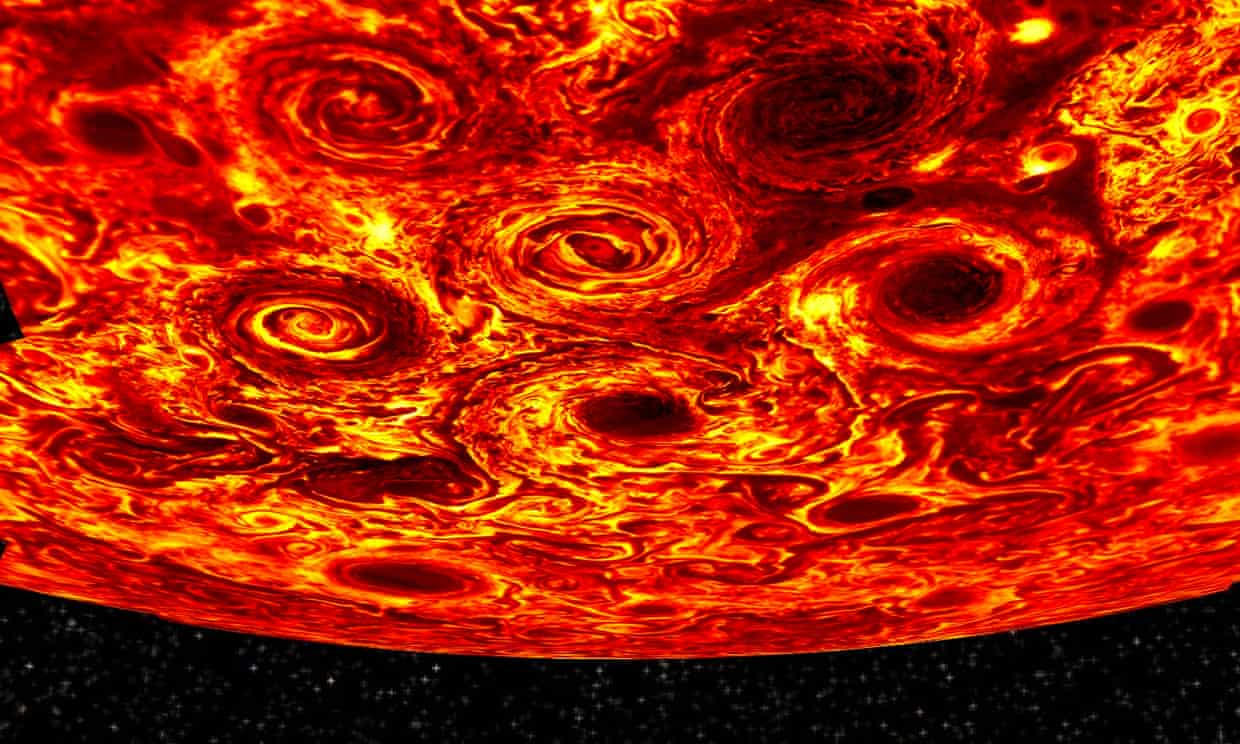The Guardian reports on the new information about the planet Jupiter gained by the Juno spacecraft. We're learning much more about its structure. The big news is that if there is a solid center, it's way way deep. Mostly Jupiter seems to be a congregation of big, deep, fast hydrogen and helium storms.
The new findings, based on extremely sensitive gravitational measurements, also begin to paint a picture of the internal structure of the planet.
On an imagined journey from the outside to the centre, one would first encounter a cloud layer of 99% hydrogen and helium, with traces of methane and ammonia. The density at the surface is about 10 times less than that of air, but the gas becomes denser and denser towards the centre of the planet. At about 10% towards the centre, the gas becomes so dense that hydrogen becomes ionised, turning into a metallic hydrogen gas approaching the density of water. About 20% towards the centre, helium condenses into rain. And in the deep interior, where pressures are about 10 million times higher than at the Earth’s surface, scientists think the gas exists as a dense soup speckled with rocks of heavy metal.Image: Storms at the South Pole.
“There may be a small hard [solid] core very, very deep, but we’re thinking it’s just dense gas enriched in heavy elements … it’s not a solid that you can imagine,” said Kaspi. “The normal concept of gas, liquid and solid don’t really hold at these pressures.”

No comments:
Post a Comment